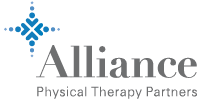
- What is electrical stimulation?
- How can electrical stimulation benefit someone recovering from an RCT?
- What are some PT techniques that can help with RTC treatment in conjunction with electrical stimulation?
- Don't delay getting physical therapy treatment for your rotator cuff tear any longer. Alliance PTP wants to help you find treatment as soon as possible
A rotator cuff tear (RCT) is an injury that occurs to the muscles that join the bones of the shoulder joint. It's often the result of repetitive motion or overuse. The most common symptoms that result from this condition are pain, stiffness, and weakness in the shoulder or arm. These symptoms can make everyday tasks feel like milestones, at least until the shoulder begins to heal.
Rotator cuff tears are a fairly common injury. They affected about 22% of the population in one study. Are you experiencing RCT and managing shoulder pain? Take a look at how electrical stimulation and other PT treatments may benefit you.
What is electrical stimulation?
Electrical stimulation is a type of therapeutic treatment method. It’s most often used to treat patients who have muscle weakness, fatigue, and pain. It can also be for those who have injuries. This method involves the use of an electrical current that passes through the muscles and causes them to tighten.
How can electrical stimulation benefit someone recovering from an RCT?
Electrical stimulation is a treatment method that can be used on people who are dealing with a rotator cuff tear. This method offers a few different kinds of benefits, which you can learn more about by reading below. Take a moment to read through each of the benefits. Next, determine if any of these are what you would like to see as an outcome of your physical therapy treatment.
- Improve range of motion — One of the first benefits of electrical stimulation for someone who has a rotator cuff injury is that it may improve the range of motion in your shoulder.
- Build muscle strength — Another benefit of electrical stimulation for those who have been diagnosed with a rotator cuff injury is that it can help build muscle strength around your shoulder.
- Improve shoulder function — If you have a tear in your rotator cuff, electrical stimulation may be able to improve the functionality of your shoulder.
- Reduce pain — Another significant benefit of electrical stimulation is that it can help reduce shoulder pain in those who have rotator cuff tears.
- Reduce the chance of future injury — If you are dealing with a tear in your rotator cuff, electrical stimulation may help reduce your chances of experiencing an injury in the future.
- Improve blood circulation — Electrical stimulation is also useful because it can improve the circulation of blood around a desired area.
Electrical stimulation can be productive for all of the reasons mentioned above, but overall it is used to improve pain and function. It may be able to stabilize the muscles around the rotator cuff and speed up the process of healing.
What are some PT techniques that can help with RTC treatment in conjunction with electrical stimulation?
There are a few different techniques that could be used in conjunction with electrical stimulation to treat a rotator cuff injury. Take a look at the descriptions of each technique listed below to learn more about how they work.
- Soft tissue mobilization — Soft tissue mobilization is a type of physical therapy technique. It involves manual manipulation of the tissue. It can be used to help rotator cuff injuries because it can help move the inflammation and fluid that may have built up in one area.
- Dry needling — Dry needling is another physical therapy technique that can be used to treat rotator cuff injuries. It encourages blood flow to the area of injury to promote healing. It can also help relieve pain and improve range of motion in a targeted area.
- McKenzie Method® — The McKenzie Method is a technique that allows a patient to take charge of their own treatment plan. This is an approach that highlights patient education for injury prevention and treatment.
- Instrument-assisted soft tissue mobilization (IASTM) — Instrument-assisted soft tissue mobilization is a technique used during physical therapy to loosen soft tissue and promote circulation to a targeted area.
Don't delay getting physical therapy treatment for your rotator cuff tear any longer. Alliance PTP wants to help you find treatment as soon as possible
At Alliance Physical Therapy Partners, we’re proudly bringing together physical therapy practices across the country to help people get the high-quality PT they need.
Want to see a physical therapist in person? We can put you in touch with an Alliance PTP partner that’s close to you and that can help you address your rotator cuff tear through electrical stimulation and a variety of other effective physical therapy techniques. We will help you find a physical therapist near you so you can find relief from your shoulder pain.
Not keen on in-person PT sessions or not close to an Alliance PTP partner? No worries. We also offer effective and affordable virtual physical therapy through our Agile Virtual Physical Therapy platform.
Come find help for your injury or chronic condition today!
Get Help at a Location Near You
